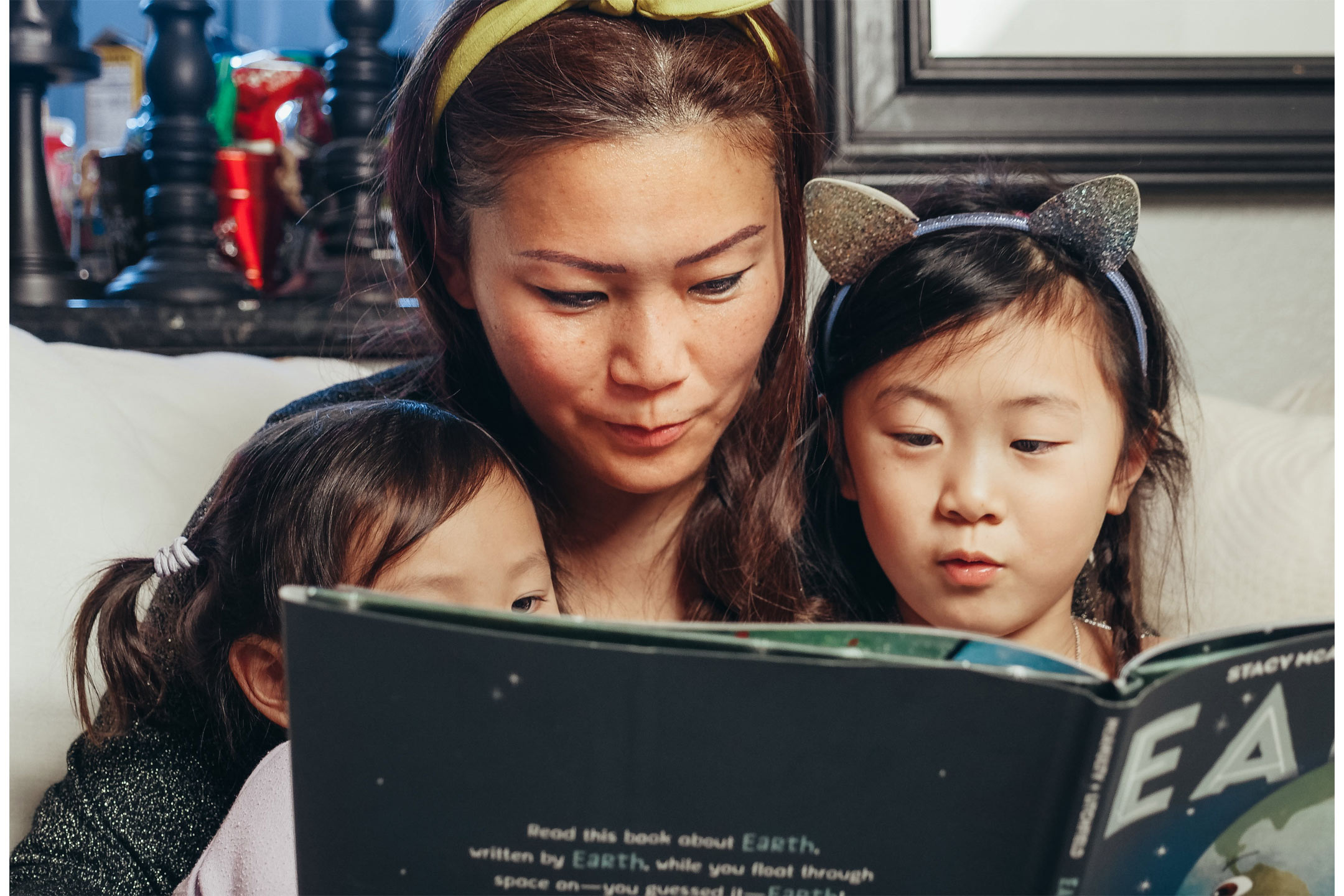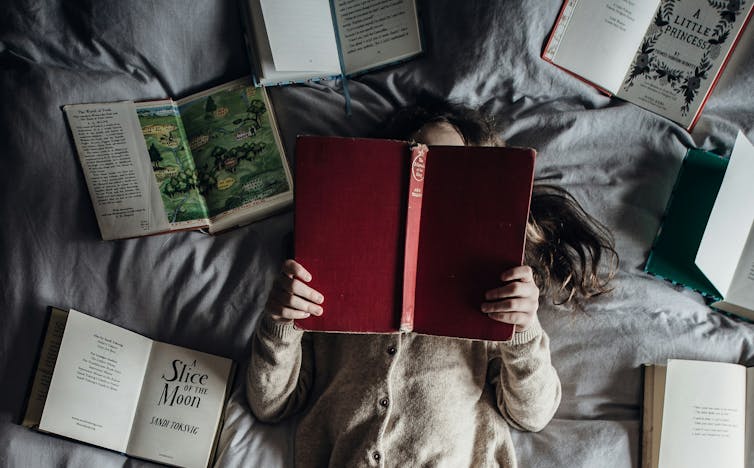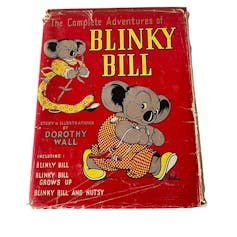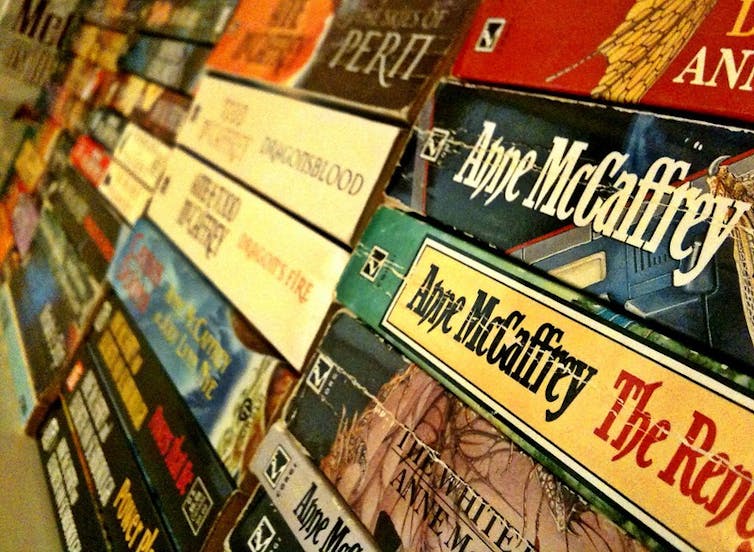
05 Sep How can sharing beloved books shape a child’s reading?
We know parents shape their children’s reading, writes Emily Grace Baulch, but so can aunts, uncles and grandparents by sharing beloved books
Over 80% of Australians with children encourage them to read. Children whose parents enjoy reading are 20% more likely to enjoy it too.
My research has found parents aren’t the only family members who play an important role in developing a passion for reading – extended family, from grandparents to siblings, uncles and great-aunts, also influence readers’ connections to books.
I surveyed 160 Australian readers about their home bookshelves and reading habits. More than 80% of them acknowledged the significant influence of family in what and how they read. Reading to children is often the invisible workload of mothers: 95% of mothers read to children, compared to 67% of fathers.
Yet intriguingly, those I surveyed – whose ages ranged from their early 20s to their 70s – collectively talked about books being passed down across eight generations.
Family members were associated with their most valued books – and their identities as readers.

Annie Spratt/Unsplash
Treasured possessions
Books passed down through generations often become treasured possessions, embodying a shared family history. One person discussed an old hardcover copy of Blinky Bill by Dorothy Wall. Originally given to her father and his siblings by their great-aunt in 1961, the book’s pages are now discoloured and falling out.
“Although I always think of my mother as having been my reading role model,” she wrote, “actually my father had an equally big impact, just in another way.” Her father is a central organising figure on her home bookshelf: she has dedicated a whole shelf to the books he likes.
 The story she tells about his old copy of Blinky Bill, however, crosses generations. The book’s battered state is a testament to its longevity and well-loved status. Its inscription to her family members makes the copy unique and irreplaceable.Another person remembered a set of Dickens’ novels, complete with margin notes and century-old newspaper clippings, carefully stored with her most special books. These volumes, initially owned by her great-great-grandmother and later gifted by her great-aunt, represent a reading bond passed down through generations.
The story she tells about his old copy of Blinky Bill, however, crosses generations. The book’s battered state is a testament to its longevity and well-loved status. Its inscription to her family members makes the copy unique and irreplaceable.Another person remembered a set of Dickens’ novels, complete with margin notes and century-old newspaper clippings, carefully stored with her most special books. These volumes, initially owned by her great-great-grandmother and later gifted by her great-aunt, represent a reading bond passed down through generations.Such books can never be replaced, no matter how many copies might be in circulation. These books are closely associated with memories and experiences – they are invaluable for who they represent.
A third person has her father’s “old” Anne McCaffrey’s Dragonriders of Pern series: he read it to her as a teenager, then passed it down. The book “sparked” her interest in science fiction, and she now intends to pass it on to her own teenager. Her book, too, is “battered”, with “chunks falling out when you read it”. The cover is falling off.

The deteriorating state of a book is part of the book’s legacy. It shows how loved it has been. Reading passions can be deliberately cultivated through family, but their value is less connected to reading comprehension or literacy than a sense of connection through sharing.
Inherited, much-loved books bind families together. They can anchor absent family members to the present. These books can come to symbolise love, connection and loss.
The family members who’ve passed down their books might not be physically present in children’s lives – they may not be reading aloud to them at bedtime – but through their books, they can have a strong presence in their loved one’s memories. That indelible trace can be sustained into adulthood.
Buying books for the next generation
Another way relatives contribute to a family reading legacy is by buying new copies of much-loved books for the next generation. Theresa Sheen, from The Quick Brown Fox, a specialist children’s bookstore in Brisbane, notes that customers often ask for copies of books they had when they were younger.
They may have read them to their children and now want them for their grandchildren. For example, The Babysitters Club series by Ann M. Martin was mentioned multiple times as a nostalgic favourite, now being sought after by grandparents.
Readers’ habits of re-buying favourite books can affect the publishing industry. With older children’s classics still selling, publishers seek to update the text to reflect contemporary cultural mores. Enid Blyton is one author who endures through intergenerational love and nostalgia. However, her work is regularly edited and bowdlerised to update it.
Books can be imbued with the voices and emotions of others. They are more than just physical objects – they are vessels of shared experiences that can be passed down, up and across generations. This enduring bond between family members does more than preserve individual stories. It actively shapes and sustains a vibrant reading culture.![]()
Emily Grace Baulch, Producer at Ludo Studio & Freelance Editor, The University of Queensland
This article is republished from The Conversation under a Creative Commons license. Read the original article.




